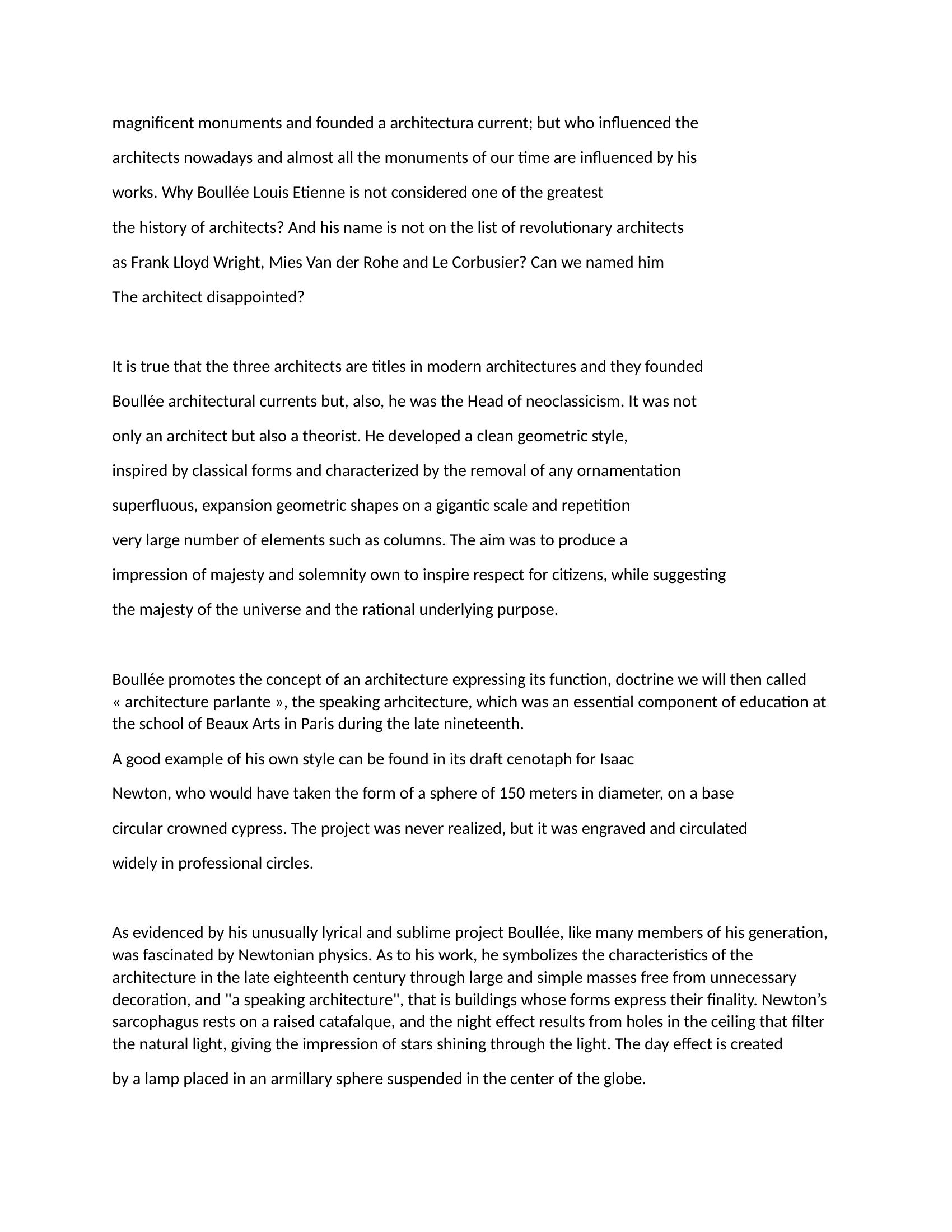Boullee, architecte futuriste
Publié le 10/02/2016

Extrait du document
«
magnificent monuments and founded a architectura current; but who influenced the
architects nowadays and almost all the monuments of our time are influenced by his
works.
Why Boullée Louis Etienne is not considered one of the greatest
the history of architects? And his name is not on the list of revolutionary architects
as Frank Lloyd Wright, Mies Van der Rohe and Le Corbusier? Can we named him
The architect disappointed?
It is true that the three architects are titles in modern architectures and they founded
Boullée architectural currents but, also, he was the Head of neoclassicism.
It was not
only an architect but also a theorist.
He developed a clean geometric style,
inspired by classical forms and characterized by the removal of any ornamentation
superfluous, expansion geometric shapes on a gigantic scale and repetition
very large number of elements such as columns.
The aim was to produce a
impression of majesty and solemnity own to inspire respect for citizens, while suggesting
the majesty of the universe and the rational underlying purpose.
Boullée promotes the concept of an architecture expressing its function, doctrine we will then called
« architecture parlante », the speaking arhcitecture, which was an essential component of education at
the school of Beaux Arts in Paris during the late nineteenth.
A good example of his own style can be found in its draft cenotaph for Isaac
Newton, who would have taken the form of a sphere of 150 meters in diameter, on a base
circular crowned cypress.
The project was never realized, but it was engraved and circulated
widely in professional circles.
As evidenced by his unusually lyrical and sublime project Boullée, like many members of his generation,
was fascinated by Newtonian physics.
As to his work, he symbolizes the characteristics of the
architecture in the late eighteenth century through large and simple masses free from unnecessary
decoration, and "a speaking architecture", that is buildings whose forms express their finality.
Newton’s
sarcophagus rests on a raised catafalque, and the night effect results from holes in the ceiling that filter
the natural light, giving the impression of stars shining through the light.
The day effect is created
by a lamp placed in an armillary sphere suspended in the center of the globe..
»
↓↓↓ APERÇU DU DOCUMENT ↓↓↓
Liens utiles
- Eupalinos ou l'Architecte (1921) de Valéry
- Eupalinos ou l'architecte de Paul Valéry (Résumé de l’ouvrage)
- ARCHITECTE MARTHAS (L') (résumé & analyse)
- Velde (Henry van de) Architecte et peintre belge
- Loos Adolf Architecte autrichien

































